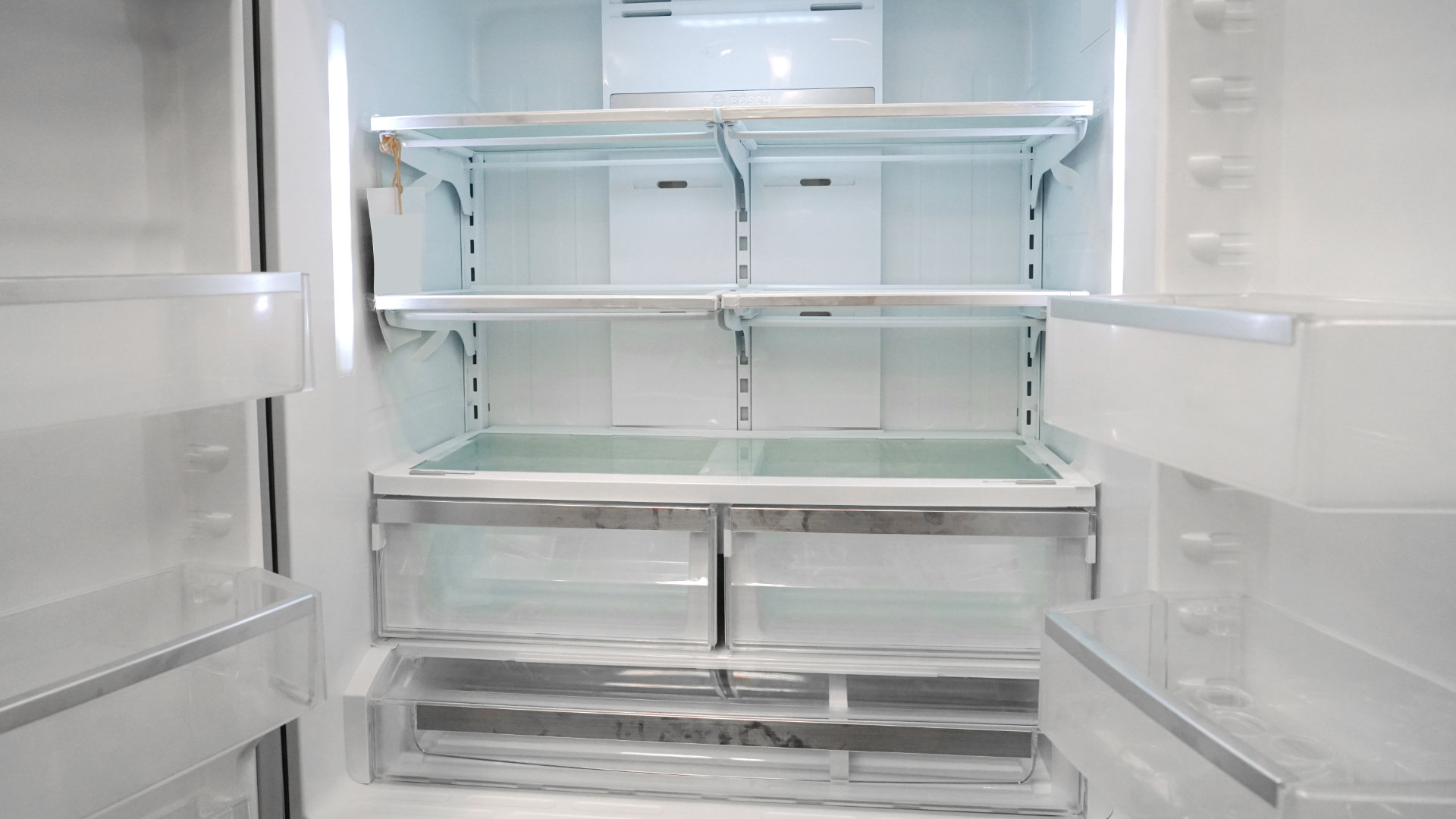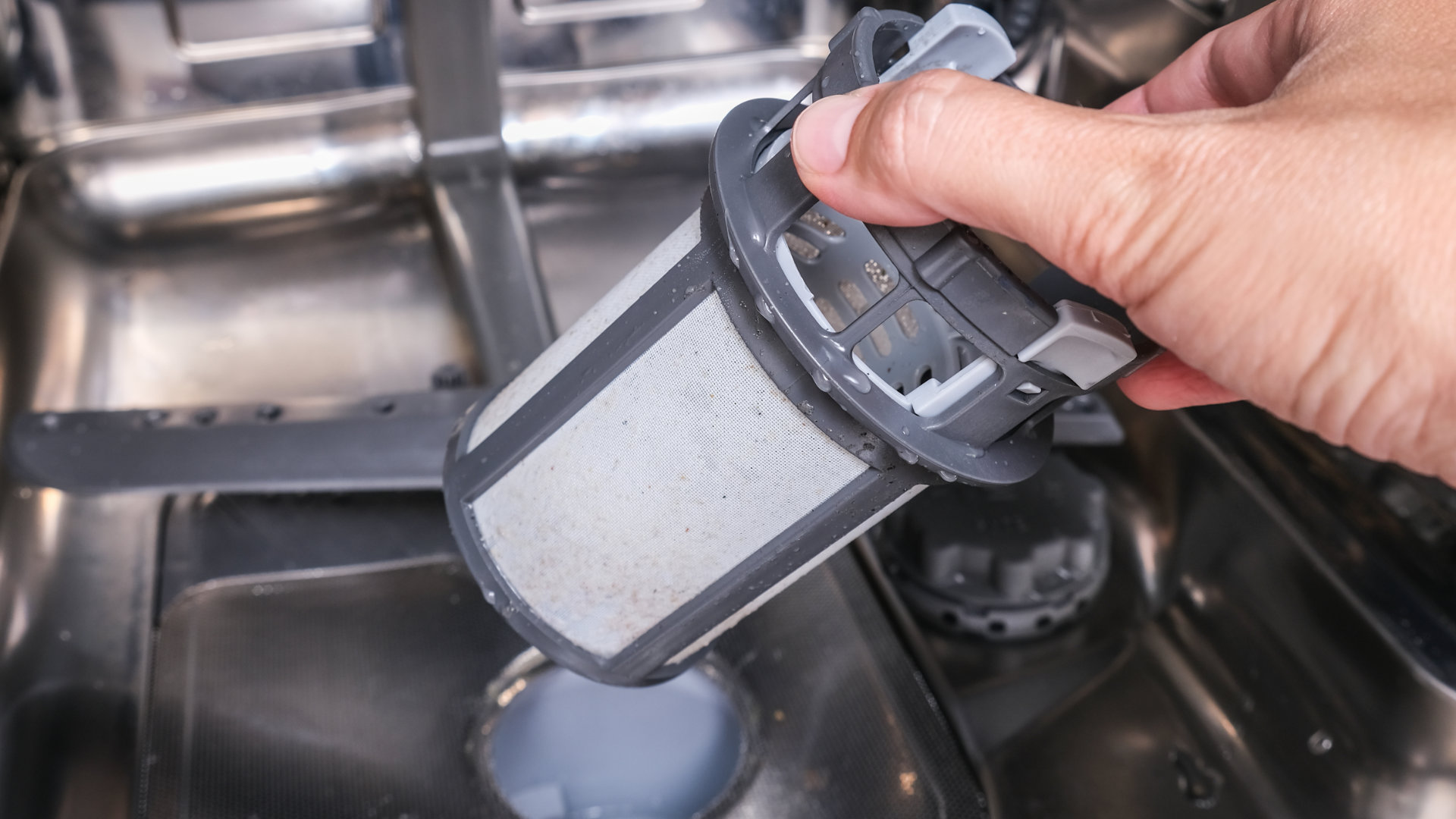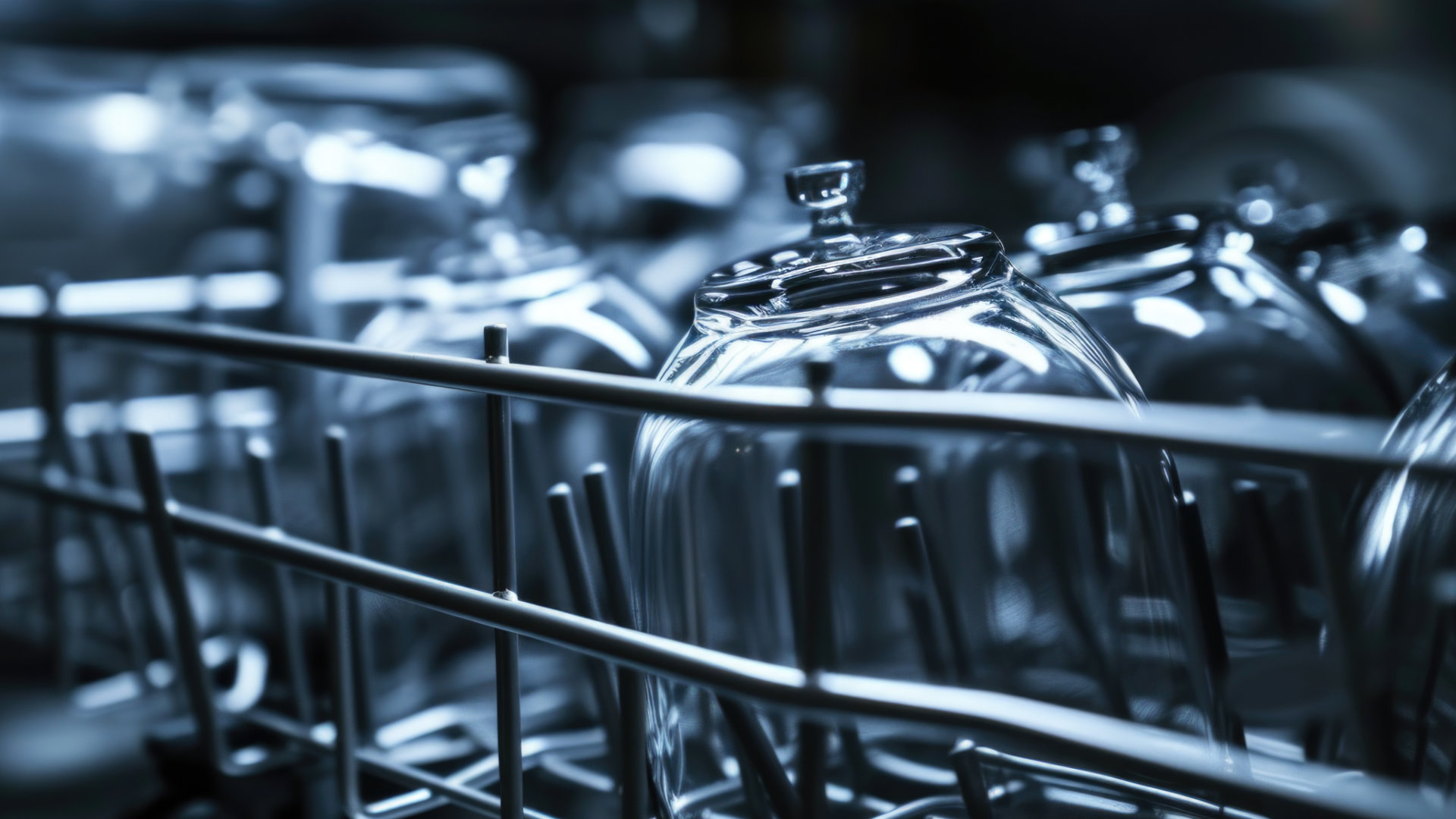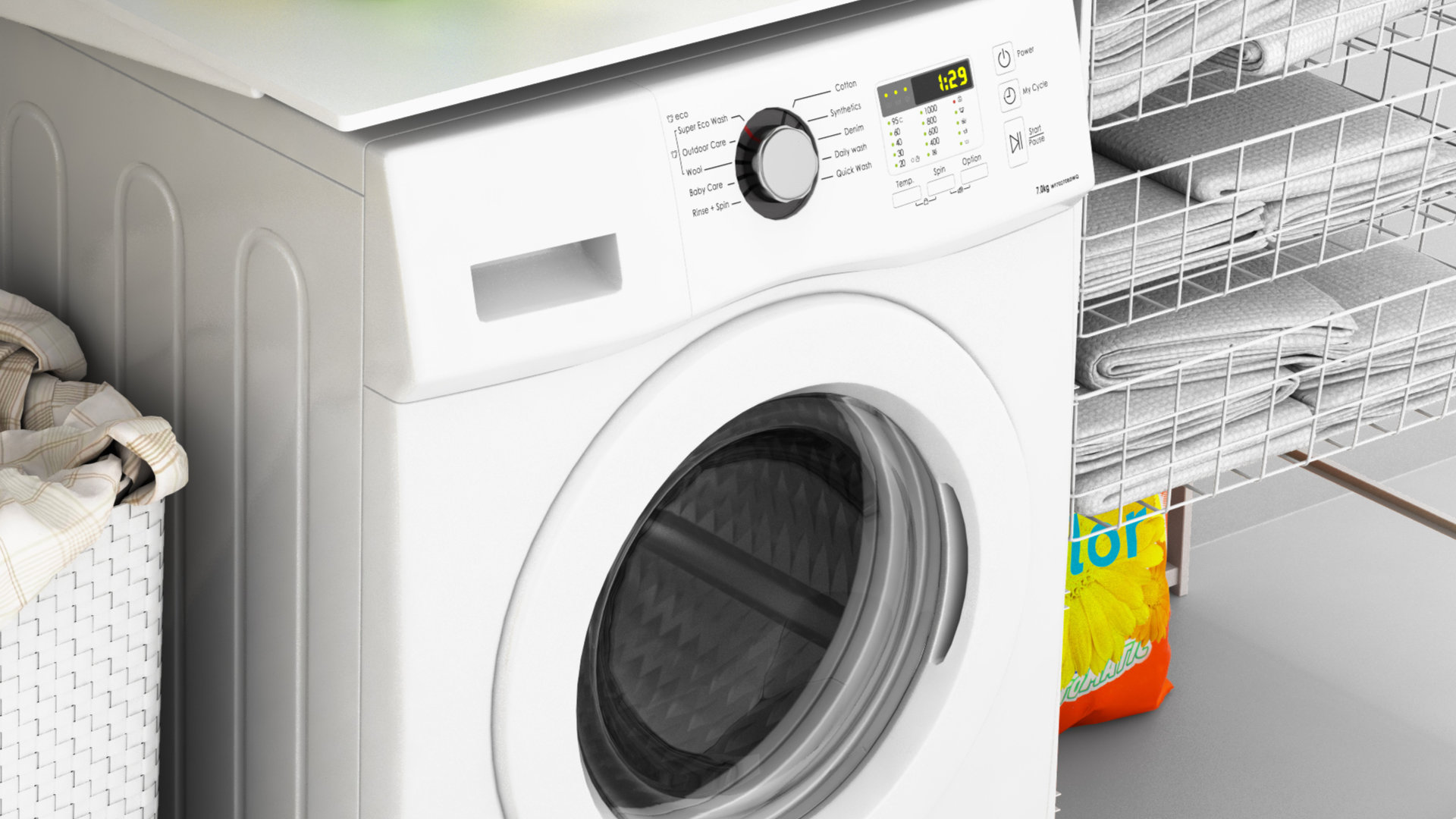
Opening your dishwasher door and discovering your appliance hasn’t drained completely is a concerning sight. Water sitting in the bottom of your dishwasher tub after the appliance has completed all cycles can be caused by a number of faulty components, fortunately, most of the defective parts are not difficult to replace. To help you troubleshoot your non-draining LG dishwasher model LDF7932BB, we’ve put together a list of the most common malfunctioning components along with a step-by-step guide to replacing them.
How to Fix a Non-draining LG Dishwasher
Before starting any of the repairs listed below, unplug your dishwasher and turn off the water running to the appliance. Work gloves and safety goggles should be worn at all times during the replacement process.
The Check Valve Flapper
The check valve in your dishwasher keeps waste water from reentering your appliance. When the valve is damaged, water traveling through the drain pump and exiting your dishwasher can end up flowing back into your appliance through the check valve. If the valve is defective, you’ll need to replace it.
How to Replace the Check Valve Flapper in Your LG Dishwasher
- Open your dishwasher door, and take out the upper and lower dish racks.
- Grab on to both sides of the lower wash arm and pull it up and out of your appliance.
- At the back of the filter, unthread the screw securing the water guide retaining clip to your dishwasher. Once the screw is removed, pull the water guide out of the mounting brackets on the ceiling and back wall of the dishwasher. Then, lift the water guide out of the filter assembly and set it down somewhere safe.
- Now remove the screws holding the filter assembly to the floor of the dishwasher. After the screws are loose, pull out the filter.
- Locate the check valve flapper inside the drain pump inlet port. Reach two fingers inside the port to remove the valve.
- Retrieve the new check valve flapper and install it inside the drain pump inlet port.
- Realign the filter assembly and rethread the screws you took out earlier.
- Grab the dishwasher water guide and insert the bottom end into the opening on the filter. Then, push the component into the mounting brackets on the ceiling and back wall of your dishwasher. Reinstall the retaining clip near the back of the filter to hold the water guide in place.
- Reattach the lower wash arm by simply pushing it into place. Spin the arm a few times to ensure it spins freely and securely.
- Reinsert the lower and upper dish racks. Then, plug-in your appliance and turn its water back on. To test out your repair, run a wash cycle. If at the end of the cycle, the dishwasher tub is empty, your repair was a success.
The Drain Pump
The drain pump in your dishwasher does exactly what its name implies. It extracts waste water from your dishwasher tub and pushes it through the appliance’s drain hose. If the pump is not functioning properly, your dishwasher won’t drain. Swapping out the malfunctioning pump is the only way to fix the issue.
How to Replace the Drain Pump in Your LG Dishwasher
- Before you can reach the drain pump, you’ll need to remove your dishwasher from underneath your kitchen counter. Start by disconnecting the drain hose from your garbage disposal or sink drain. Then, unthread the fill line from the hot water valve. Some water may spill out of the drain hose and fill line so have a towel handy to wipe it up.
- Open you dishwasher door and take out the upper and lower dish racks. Using a Phillips screwdriver, unthread the screws securing the dishwasher mounting brackets to the kitchen cabinet. Next, pull the appliance forward to remove it from underneath the counter.
- Close the dishwasher door, and with the help of another individual, carefully lay the dishwasher on it’s back.
- With the bottom of your dishwasher exposed, use a screwdriver to remove the large access panel covering the drain pump. Once the panel is detached, locate the drain pump, and disconnect the wire harnesses running to it. Then, unthread the mounting screws securing the pump to the bottom of your appliance, and take the faulty drain pump out of your dishwasher.
- Grab the new drain pump and line it up with drain pump housing. Then rethread the mounting screws to hold the component in place. Next, reconnect the two drain pump wire harnesses.
- Now that your dishwasher is equipped with a functioning drain pump, you can reattach its bottom access panel. Once the panel is secure, return your appliance to a standing position with the help of a family member or friend.
- Feed the drain hose and inlet line through the hole in your cabinet which leads to your sink drain and hot water inlet valve. Next, slide your dishwasher underneath your kitchen cabinet. Reattach the drain hose to the garbage disposal or sink drain, and reconnect the inlet line to the inlet valve.
- Use the mounting screws you removed earlier to secure the mounting brackets to your kitchen counter. Open your dishwasher door and replace the upper and lower dish racks.
- Plug-in your dishwasher and turn the water running to it back on before testing out your appliance’s new drain pump.
Other Common Malfunctions
- The Drain Hose carries waste water from the dishwasher to the sink drain. If the hose becomes clogged with debris, the waste water created by cleaning your dishes will have no way out of your dishwasher. Clogs often accumulate at the connection between the hose and sink drain or garbage disposal, so starting your inspection there is best. If there is no clog in that area, you will need to remove the drain hose from the dishwasher to better examine the component. Once you find the clog clean it out and replace the hose.
- A Newly Installed Garbage Disposal comes with a drain plug inserted into the drain tube. If the plug is not removed and you attach your dishwasher drain hose to the disposal, your appliance will not drain due to the plug creating a clog. To get rid of the problem, simply take the plug out of the drain tube.
A non-draining dishwasher leaves you in a sticky situation. If you can’t figure out why the water in your appliance is backed up, please contact us today and our team of appliance repair specialist will help you diagnose and repair the malfunction.

How to Reset a Whirlpool Refrigerator Ice Maker

6 Reasons Your LG Refrigerator Is Not Making Ice

Kenmore Fridge Ice Maker Not Working? 5 Ways to Fix It

How to Remove Fish Smell from Your Refrigerator

How To Fix Bosch Dishwasher E24 Error

Troubleshooting a Whirlpool Dishwasher Not Draining

Why Is Your Fridge Water Not Working, but Ice Is?

How to Fix the E15 Bosch Dishwasher Error Code

How Much Power Does a Microwave Use?

How to Properly Clean Refrigerator Coils

How to Fix an LG Washer Showing OE Error Code

Troubleshooting a GE Dishwasher with No Power and No Lights

10 Reasons Why Your Bosch Dishwasher Won’t Start

Troubleshooting the F5 Error Code with a Maytag Washer


